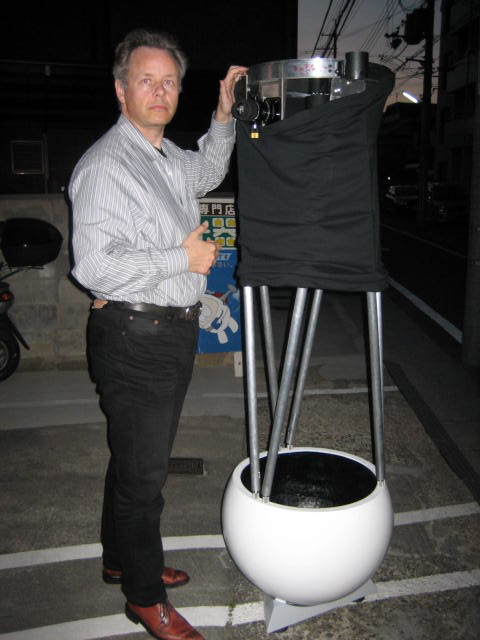Most everyone has some idea of what a telescope is but only the truly seasoned astronomer knows that it is more of a time machine than anything else. And bigger really is better!
When was the birth of the universe? Are we expanding at a decreasing rate and heading for another Big Bang? When does the Milky Way collide with Andromeda? Students at the Smith’s School of English Franchise in Kotoen who are interested in the Natural Science and Astronomy Course are very interested in such topics.
When this scope project is completed perhaps we will get a tiny bit closer to answering some of those questions, perhaps not on a grand scale of modern science, but in our own hearts at least. Meanwhile, I have one student who is particularly interested in the type of glass used to make the mirror in this particular prototype shown. Generally optical mirrors can be made from three different types of glass: soda lime which is the lowest quality appropriate for the task, BAK-7 which is easy to come by and exhibits excellent reflective and thermal expansion properties, and finally Pyrex, which is indeed the king of mirror glasses. Note that mirrors are made from a glass very different from that used for lenses.
Well, the unhappy story is that Pyrex has become more and more difficult to get thanks to the fact that the inventor and only maker of the product decided to quit production in 2009. This has left astronomers with a very large dilemna: what kind of material are we going to have access to and what if anything can replace the Pyrex that has been held so dear.
Well the BAK-7 mirror in this scope has proven itself. BAK-7 vs Pyrex … that is now a point of debate and whether it is possible to produce an improved version of the borosilicate material to rival the favorite. Time will tell. The Chinese are getting mighty good at it, too so we should see a fair amount of innovation in coming out in the next few years.
This 40cm telescope will go a long way to reaching deep into heavens on a very dark, clear night. The next project will be a 50cm with which we will be able to do some real science.
For a look at my own Natural Science and Astronomy Course at Smith’s School Kotoen, check out :
www.smithweb.co.jp/sub/kotoen/sub4.shtml
For a look at some of the work I do in astronomy products in Japan, check out :
Martin Werner Zander, Partner in the Smith’s School of English
マーティン・ワーナー・ザンダー
Owner, Smith’s School in Kotoen

Leave a Reply